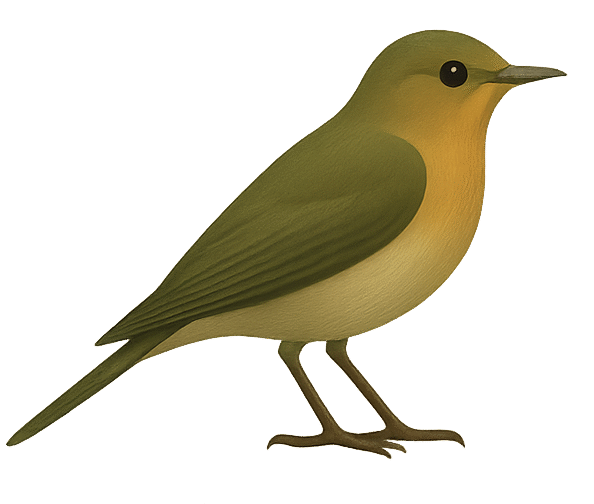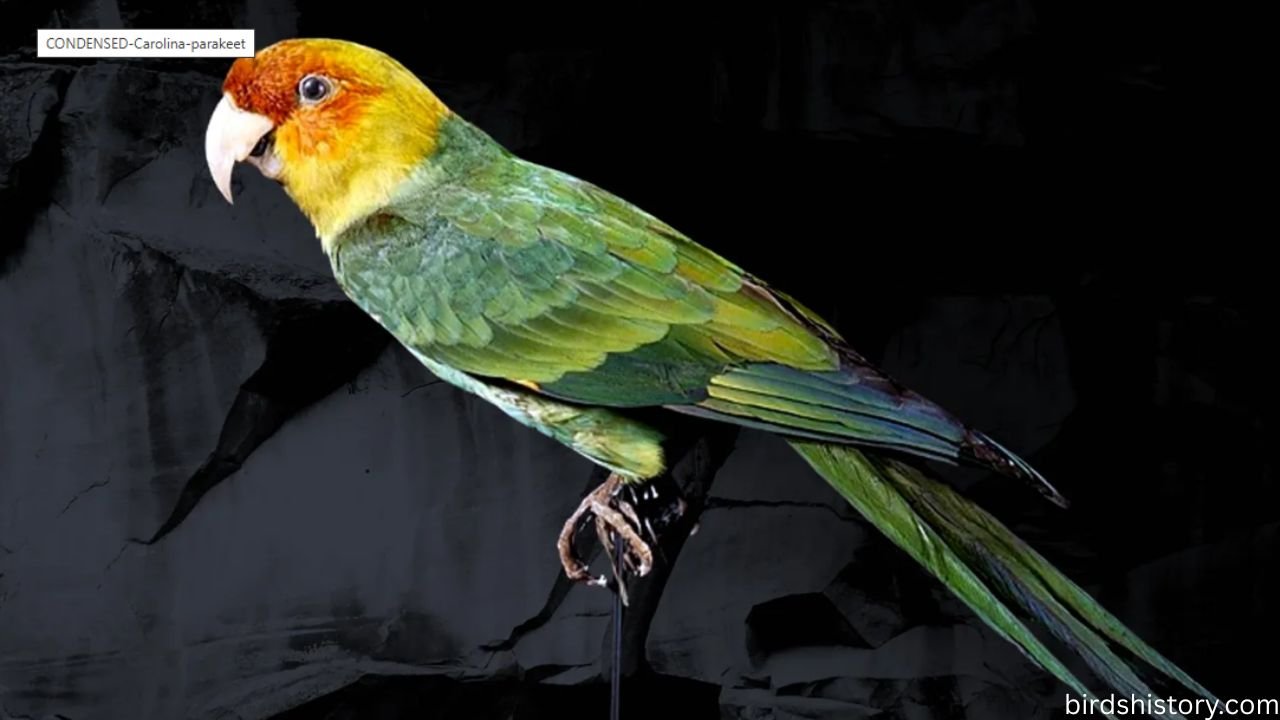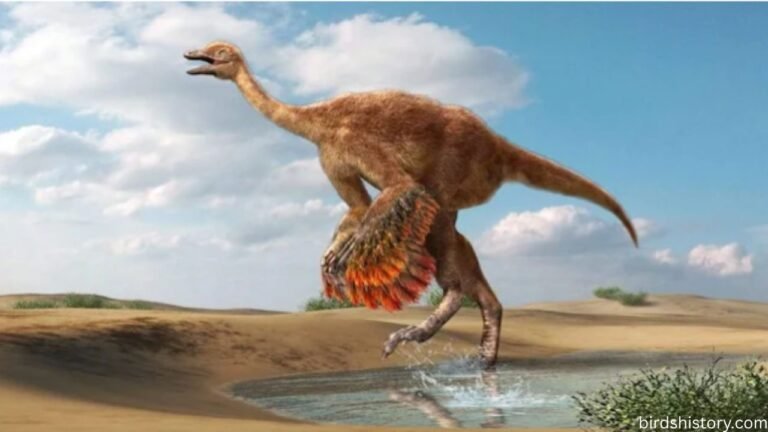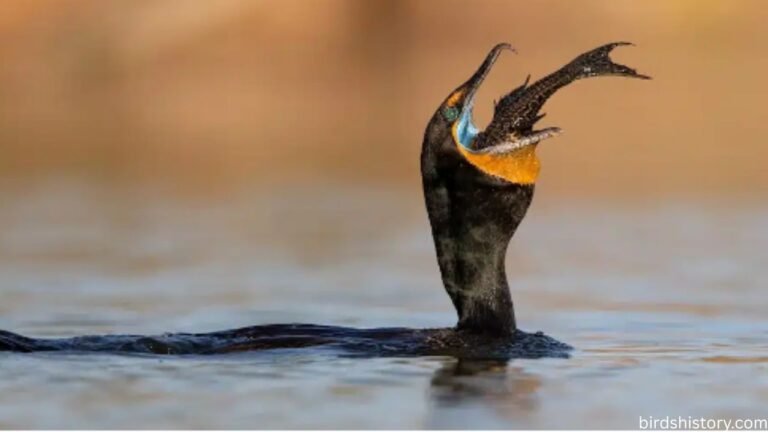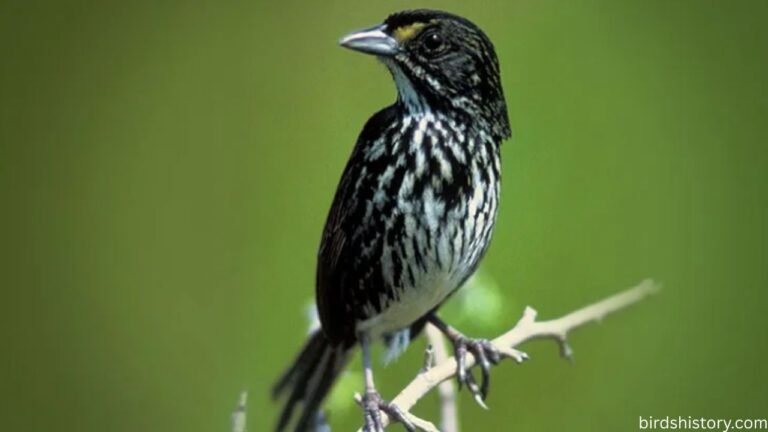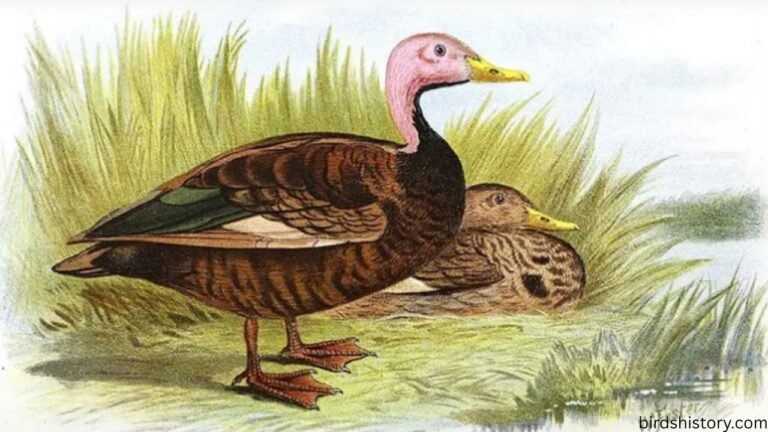Carolina Parakeet – America’s Lost Parrot
The Carolina Parakeet was once one of the most colorful and fascinating birds native to the United States. With its bright green body, yellow head, and striking orange face, it looked like a tropical parrot—but it lived across much of the eastern United States. Flocks of these birds once filled forests and river valleys from New York to Florida, adding a splash of exotic color to North American landscapes.
What makes the Carolina Parakeet so interesting is not only its appearance but also its tragic story. It was the only native parrot species in the continental United States, and by the early 20th century, it was gone forever. The last known bird, named Incas, died in the Cincinnati Zoo in 1918, just four years after Martha, the last passenger pigeon, passed away in the same facility.
A surprising fact about the Carolina Parakeet: its diet included cockleburs, a toxic plant dangerous to many animals. Yet the parakeet ate them freely, possibly storing toxins in its body that made it unappetizing to predators.
Carolina Parakeet Taxonomy / Classification
- Common Name: Carolina Parakeet
- Scientific Name: Conuropsis carolinensis
- Family: Psittacidae (parrots)
- Order: Psittaciformes
- Class: Aves
Also read: /wandering/
This species was a true parrot, related to the colorful macaws, conures, and parakeets of Central and South America. Despite its tropical relatives, the Carolina Parakeet thrived in temperate North America for centuries.
Carolina Parakeet Physical Description
The Carolina Parakeet was a medium-sized parrot, easily recognized by its vibrant plumage.
- Length: 13 inches (33 cm)
- Wingspan: About 22 inches (56 cm)
- Weight: 8–9 ounces (230–260 g)
- Plumage: Bright green body, yellow head, and orange-red face.
- Beak: Pale, curved, and strong for cracking seeds.
- Feet: Zygodactyl (two toes forward, two back), perfect for gripping branches.
Sexual Dimorphism: Males and females looked similar, though females were slightly smaller.
Unique Traits:
- Their colorful feathers were prized in the 1800s for women’s hats.
- The orange-red face gave them a distinctive, almost clown-like look.
- Unlike tropical parrots, their plumage allowed them to blend into leafy green forests in summer.
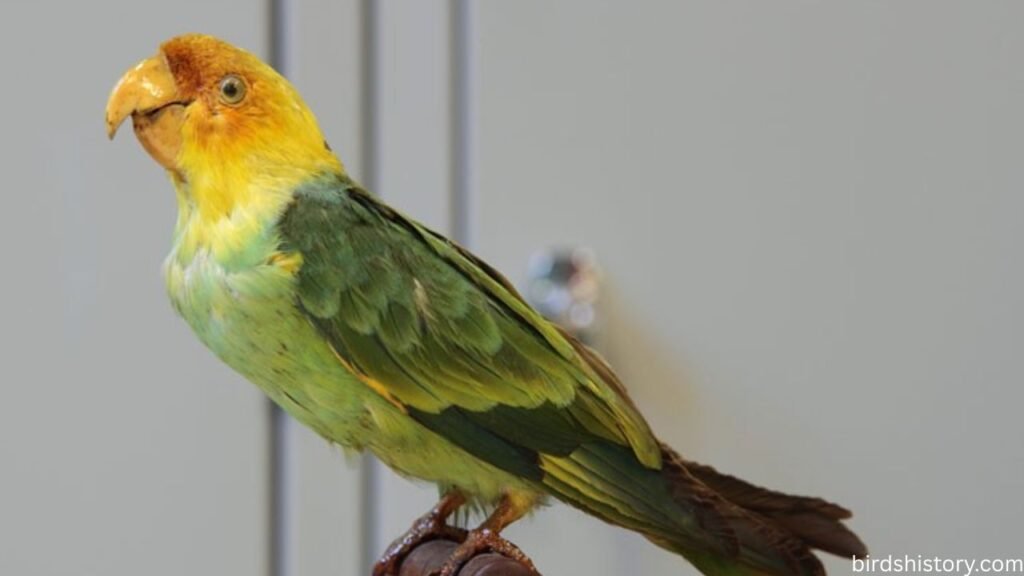
Habitat and Range of Carolina Parakeet
The Carolina Parakeet had a surprisingly wide range across eastern North America.
- Range: From the Great Lakes and New York, south through the Gulf Coast, and west into Colorado and Texas.
- Preferred Habitats: Swampy forests, river valleys, and old-growth hardwood forests. They were often seen along the Mississippi and Ohio Rivers.
- Migration: Not truly migratory, but flocks moved seasonally to follow food supplies.
They loved riverine environments filled with cypress trees and dense vegetation, which provided both food and nesting cavities.
Carolina Parakeet Diet and Feeding Habits
Carolina Parakeets were primarily herbivores, feeding on seeds, fruits, and plants.
- Diet Staples: Seeds of cockleburs, thistles, and sunflowers; fruits like apples, grapes, and figs.
- Feeding Behavior: Flocks often raided orchards and farms, making them unpopular with farmers.
- Unique Ability: They consumed cockleburs (Xanthium strumarium), which are toxic to many animals, without harm.
Because they fed in groups, entire flocks could devastate crops, leading to widespread hunting by humans who saw them as agricultural pests.
Behavior and Lifestyle
The Carolina Parakeet was a highly social bird, rarely seen alone.
- Flocks: Often gathered in groups of 200–300 individuals, sometimes larger.
- Flight Style: Strong, fast, and noisy, with flocks swooping together like starlings.
- Nesting Habits: Preferred cavities in hollow trees, often near rivers or swamps.
- Vocalizations: Loud, shrill calls described as harsh but musical, used to keep the flock together.
- Mating Rituals: Likely monogamous, with strong pair bonds. Mates often perched closely and preened each other.
One notable behavior was their loyalty to fallen flock members. If one bird was shot, others often circled back, making them easy targets for hunters.
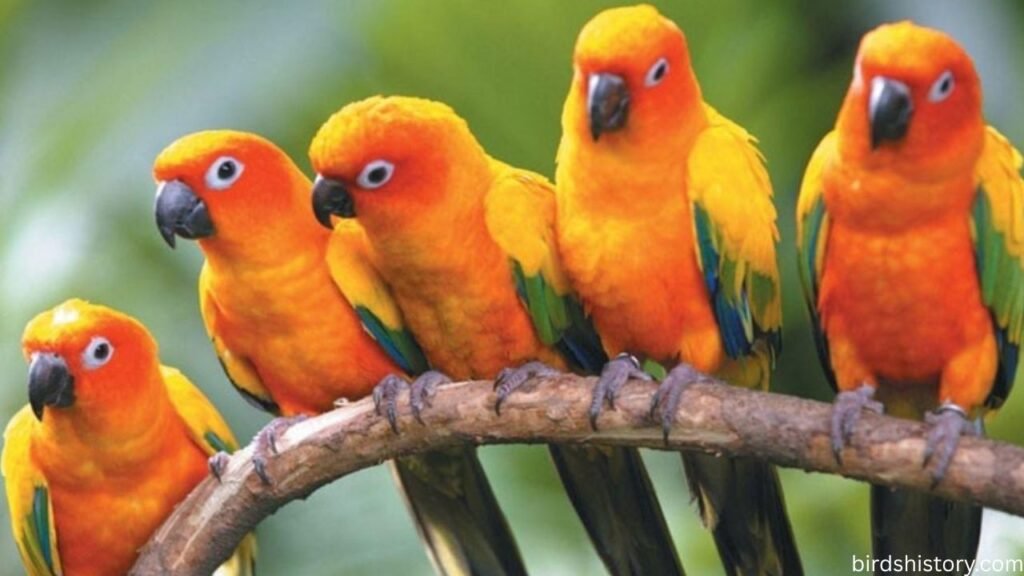
Reproduction and Lifespan of Carolina Parakeet
The reproductive habits of the Carolina Parakeet were similar to other parrots.
- Breeding Season: Likely spring and early summer.
- Nesting: Chose hollow trees in old-growth forests. Multiple pairs sometimes nested in the same tree.
- Eggs: Clutches of 2–5 white eggs.
- Incubation: About 23 days, with both parents involved.
- Chicks: Hatched blind and featherless; fledged after 6–8 weeks.
- Lifespan: Estimated 15–20 years in the wild, possibly longer in captivity.
Their slow reproductive rate meant populations could not recover quickly once hunting and habitat destruction reduced their numbers.
Predators and Threats
Natural Predators
- Snakes and Raccoons: Raided nests for eggs and chicks.
- Hawks and Owls: Preyed on adults.
Human-Driven Threats (most critical)
- Hunting: Killed in huge numbers for feathers used in hats and clothing.
- Pest Eradication: Farmers shot them to protect crops.
- Habitat Loss: Deforestation of river valleys and swamps destroyed nesting sites.
- Capture: Many were taken alive for the pet trade.
Their tendency to return to help fallen flock members made mass killings devastatingly easy.
Carolina Parakeet Conservation Status
The Carolina Parakeet is officially extinct.
- IUCN Red List: Extinct.
- Timeline:
- Declines noted as early as the 1700s.
- Rapid population crashes in the 1800s.
- Last confirmed wild sighting in Florida (1904).
- Last known captive bird, Incas, died in 1918 at the Cincinnati Zoo.
Unfortunately, conservation efforts did not exist during its decline. By the time naturalists realized the species was disappearing, it was too late.
Interesting Facts About the Carolina Parakeet
- It was the only parrot species native to the eastern United States.
- Its love for cockleburs may have given it toxic flesh, which discouraged some predators.
- Flocks were so noisy they could be heard long before being seen.
- They sometimes nested communally, with multiple families in a single tree.
- Feathers were so fashionable in the 1800s that hunters wiped out entire colonies.
- Both the Carolina Parakeet and Passenger Pigeon went extinct around the same time, highlighting the devastating impact of 19th-century hunting.
- Some myths suggested the birds could predict weather changes based on their noisy calls.
- The species’ extinction is still studied today as a lesson in conservation biology.
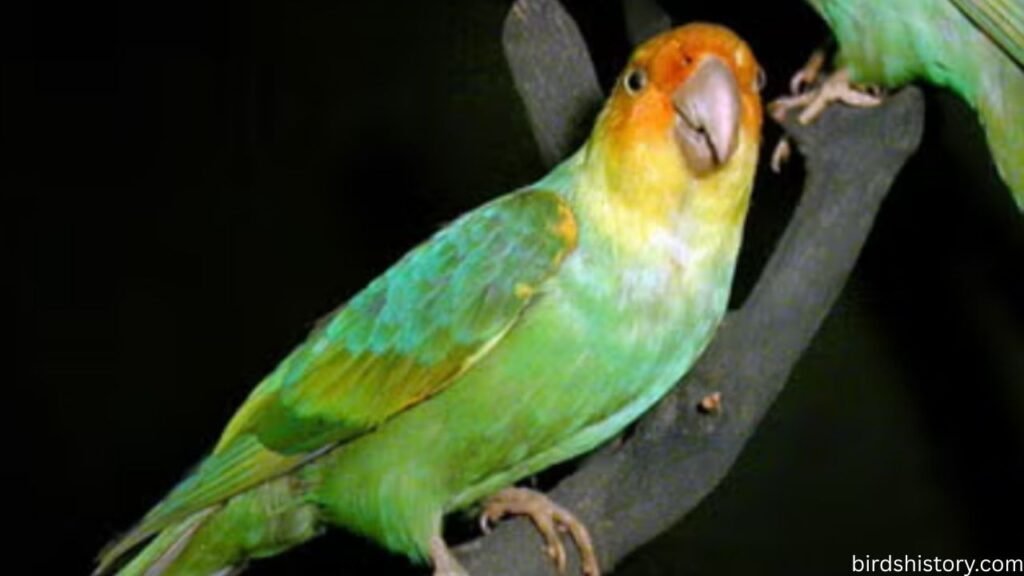
Conclusion
The Carolina Parakeet was a stunning bird that once brought a burst of tropical color to North America’s forests. With its green body, yellow head, and orange face, it stood out in a land otherwise dominated by songbirds and raptors. But beyond its looks, the parakeet was ecologically important—dispersing seeds, controlling weeds like cockleburs, and adding vibrancy to the landscape.
Its extinction is a tragic example of how human activity—hunting, deforestation, and thoughtless exploitation—can erase even widespread and abundant species. The Carolina Parakeet’s story is both a cautionary tale and a reminder of why protecting biodiversity matters.
While the bird itself is gone, its memory lives on as a symbol of what we’ve lost and why conservation is more important than ever.
FAQs
1. What was the Carolina Parakeet?
It was the only native parrot species in the continental United States.
2. What was Carolina Parakeet scientific name?
Conuropsis carolinensis.
3. What did Carolina Parakeet look like?
Bright green body, yellow head, and orange face.
4. Where did Carolina Parakeet live?
Forests, swamps, and river valleys across the eastern U.S., from New York to Florida and west to Colorado.
5. What did Carolina Parakeet eat?
Seeds, fruits, and plants, including toxic cockleburs.
6. Why did Carolina Parakeet go extinct?
Overhunting, habitat destruction, and capture for the pet trade.
7. When did the last Carolina Parakeet die?
In 1918, a bird named Incas died at the Cincinnati Zoo.
8. Did Carolina Parakeet really eat poisonous plants?
Yes, it ate cockleburs, which are toxic to many animals.
9. How social was the Carolina Parakeet?
Extremely social—lived and traveled in noisy flocks of hundreds.
10. Why is Carolina Parakeet important today?
It serves as a powerful reminder of how human actions can wipe out even abundant species, fueling modern conservation awareness.
